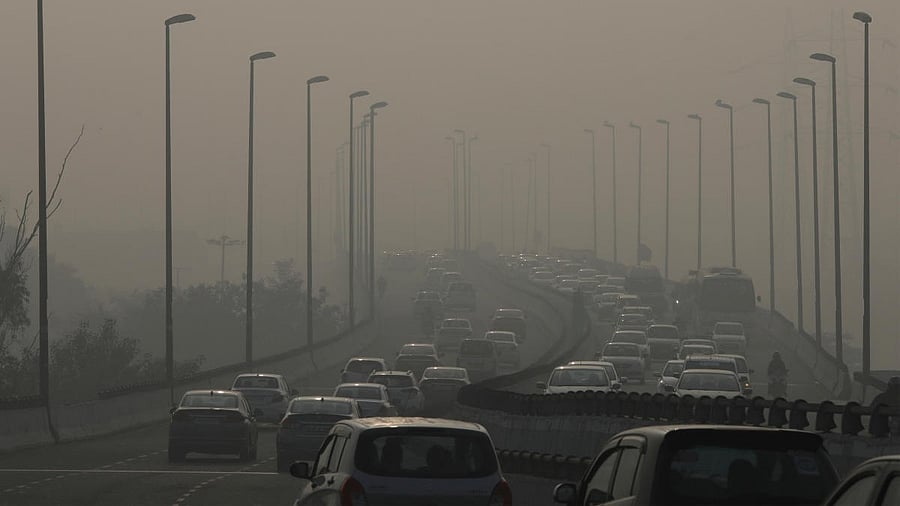
Residents living in New Delhi can live an additional 11.9 years, followed by Uttar Pradesh (8.8), Haryana (8.3), Bihar (8), Punjab (6.4), Tripura (6.1) while residents of other states in the north stand to gain 4 years or more.
Credit: Reuters File Photo
Air pollution is reducing the life expectancy of an average Indian by 5.3 years, but bringing down the fine particulate matter (PM 2.5) to the limits set by the World Health Organisation (WHO) can help claw back nearly 4 years, says a study by the Energy Policy Institute at the University of Chicago.
The Air Quality Life Index (AQLI) Report by Michael Greenstone and Christa Hasenkopf calculated the life expectancy based on a pair of peer-reviewed studies that isolated the effect of PM pollution from other factors that affect health.
PM pollution in India has increased by 67.7 per cent between 1998 and 2021. Besides calculating the impact on health for the national average, the study took the annual PM 2.5 concentration (micrograms per cubic metre) at the state-level to decentralise the data further.
The northern plains, where nearly 40 per cent of India's population lives, is the worst affected by PM 2.5 pollution. The study said an average Indian's potential life expectancy can go up by 3.88 years by reducing the concentration of the pollutant.
Residents living in New Delhi can live an additional 11.9 years, followed by Uttar Pradesh (8.8), Haryana (8.3), Bihar (8), Punjab (6.4), Tripura (6.1) while residents of other states in the north stand to gain 4 years or more.
In South India, residents of Karnataka and Goa can see their life expectancy go up by 2.4 years followed by Tamil Nadu (2.3), Kerala (1.3) and others. In the western peninsula, Maharashtra has much to gain as people there can live longer by 3.6 years.
Gaps in policies
India launched the National Clean Air Programme (NCAP) in 2019 to reduce PM pollution by up to 30 per cent by 2024 in relation to the base year of 2017. However, the goal was not reached. Last year, the Centre revised the NCAP to reduce PM at 131 cities by 2025-26.
"If the ambition of the revised target is met, these cities' overall annual average PM 2.5 exposure would be 21.9 micrograms per cubic metre lower than 2017 levels. This would add 2.1 years onto the life of the average Indian in these 131 cities and 7.9 months onto the life of the average Indian country-wide," the study said.
Avinash Chanchal, Senior Climate Campaigner, Greenpeace India, said India urgently needs to revise its national ambient air quality standard (NAAQS) to align with the WHO standards. "The permissible concentration levels in the NAAQS are very high compared to the WHO standards. This needs to be corrected at the earliest for a realistic assessment of our air quality," he said.
He noted that a lack of sector-specific targets to reduce pollution at source and a comprehensive plan to integrate them has made the NCAP weak.